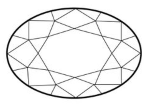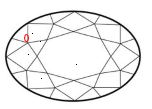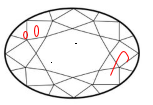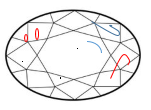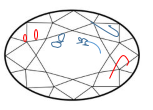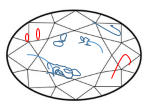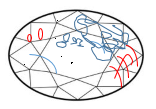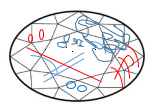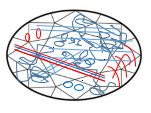QUALITY GRADING OF COLORED STONES
SSGL applies most of the standard developed by AIGS to grade colored stones quality. This grading method has proved itself in being applicable at a large scale and giving consistent results which are meaningful for purpose of pricing gemstones or giving accurate description of a gem "objective beauty". Nonetheless, SSGL has further developed such system to reach an upper level of grading with the use of mathematical models based on theses standards.
COLOR
Faceted gemstones and cabochons color is graded by viewing the gem face up at approximately 20 to 30cm distance from the eye and from the light source. The light source is standard daylight D6500K. Gemstones are cut for being the most beautiful when viewed face up and mounted in jewelry, it thus does not make sense to grade them in any other positiions (such as from the side or the pavillion).
HUE: The purest hues are prefered to mixed hues and they are also rarer than mixed hues. Thus, a gem with a pure red will have a higher hue grade than a red gem with a secondary hue of orange or purple.
Primary hue:

Example of secondary hue in the orange area:

SATURATION: Refers to the intensity of the color. A strong color of vivid aspect is the most attractive. A low saturation will lead to a greyish aspect of the color. The grades are WEAK | FAIR | MODERATE | STRONG
TONE: Refers to the lightness of the color. A dark tone will make the gem appear black while a light tone colorless. The best is a medium tone. Grades are VERY LIGHT | LIGHT | MEDIUM | DARK | VERY DARK
COLOR ZONING: Refers to the presence of lines, bands and/or patches of colors. Usually, color zoning is not a positive thing if visible from face up, the best is a uniform color. Grades are NONE | FAINT | MODERATE | STRONG
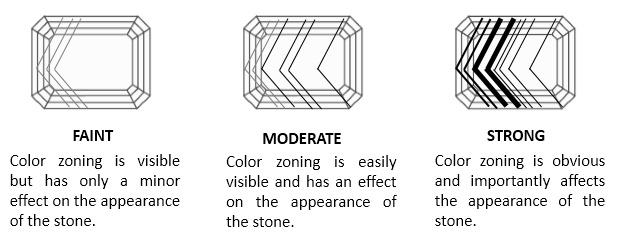
PLEOCHROISM: Refers to the viewing of different colors based on the angle of observation. Presence of pleochroism is usually not a positive thing except if the stone is especially attractive for such a reason.Grades are NONE | FAINT | MODERATE | STRONG
DISPERSION: Refers to the breaking of light into spectral colors (also known as "fire"), it corresponds to rainbow flashes seen when moving the stones, diamonds are famous for this reason. A strong dispersion renders the gem attractive. Grades are NONE | LOW | MODERATE | STRONG
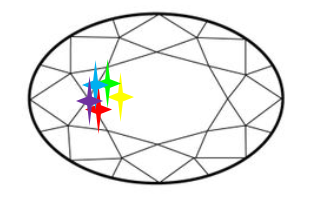
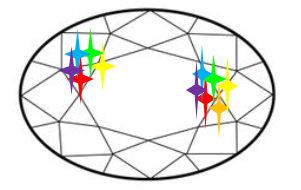
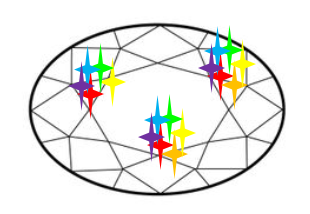
SPECIAL COLORS: Refers to a special name or attribute given in the market to a color. E.g. Pigeon Blood, Royal blue, Muzo green, etc.; For further information about special colors, see "special colors" thereafter
CUTTING
BRILLIANCY:Refers to the amount of light reflected from the back facets of the gem. Grades: POOR (0-20%) | FAIR (21-40%) | GOOD (41-60%) | VERY GOOD (61|80%) | EXCELLLENT (81|100%)
SCINTILLATION: Refers to the degree of sparkling. Grades are NONE | LOW | MODERATE | STRONG
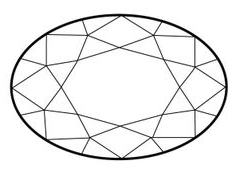
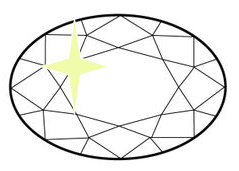
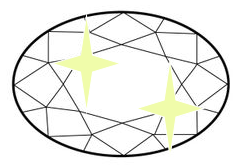
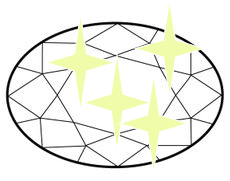
CROWN/PAVILLION RATIO: Refers to the height of the crown relative to the height of the gem. Percentage (X): POOR (X>50) | FAIR (50>X>33) | GOOD (33>X>25) | EXCELLENT (X=25) | GOOD (25>X>20) | POOR (X<20)

TOTAL DEPTH: Refer to the gem height divided by its width expressed in percentage. grades function of ratio (X) in %: POOR (X<50 & X>75) | FAIR (50|55 & 70|75) | GOOD (55|60 & 65|70) | EXCELLENT (55 PAVILION BULGE:Refers to the degree of curve of the pavilion cut from gidle to culet. Grades: NONE | SLIGHT | MODERATE | LARGE TABLE SIZE:: Refers the the table length divided by the gem length expressed in %. A too small table or an excessively large table may be detrimental to the appearance of the stone. GIRDLE THICKNESS: Refers to the average thickness and regularity of the girdle. A regular and straight girdle of medium thickness is the best as a very thin girdle may scratch and chip easily while a very thick girdle will increase weight without any benefit on the gem appearance or worse even result in a decrease of brilliancy.. Grades are VERY THIN | THIN | MEDIUM | THICK | VERY THICK complemented with +IRR si irregular and +W if wavy. PROPORTION: Refers to the length divided by the width. Each shape has its preferred proportion. SYMMETRY: The first grade is the gem viewed face up, second from the pavillion. Grades are POOR | FAIR | GOOD | VERY GOOD | EXCELLENT FINISH:: Refers to the faceting quality (shine, regularity and flatness of facets). Grades are POOR | FAIR | GOOD | VERY GOOD | EXCELLENT Clarity refers to the degree of inclusion and its impact on the gem appearance. Grades are:
CLARITY GRADE: Refers to the clarity relative to the usual clarity of the gem variety. Grades are POOR | FAIR | GOOD | VERY GOOD | EXCELLENT

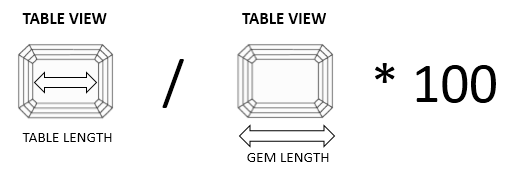

CLARITY
